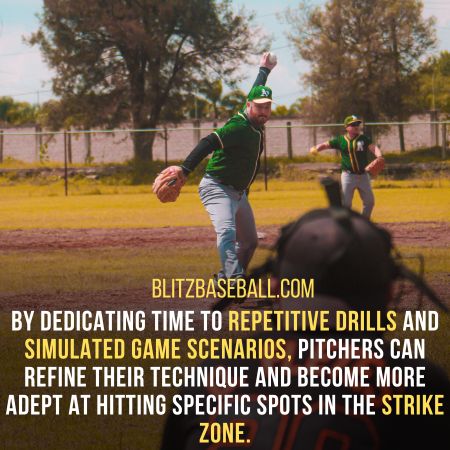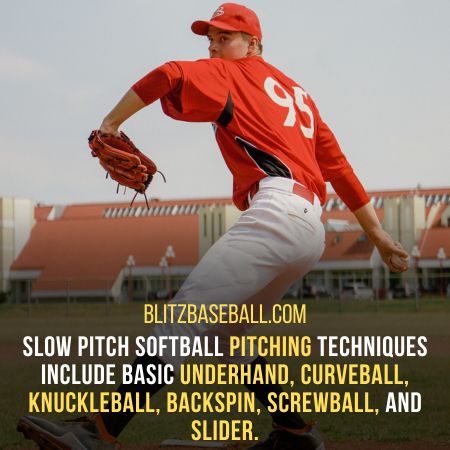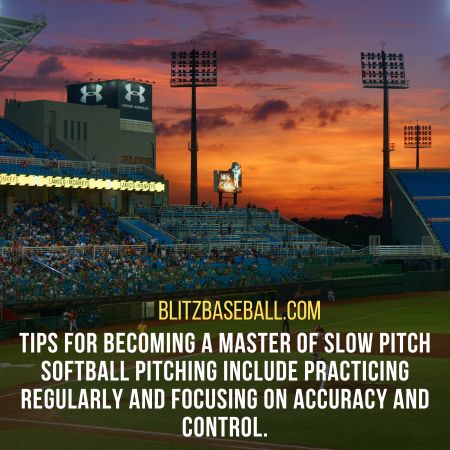Slow-pitch softball pitching is a skill that demands mastery of various techniques, such as the underhand, curveball, knuckleball, backspin, screwball, and slider.
To become a pitching master in slow-pitch softball, one must focus on factors like grip and release, understanding the strike zone, and executing different arcs effectively. Regular practice is essential, with an emphasis on accuracy and control.
For backspin pitching, a wide grip with the middle and index finger close to the axis of rotation, along with wrist rotation and a pinching action, is recommended for achieving spin and a steep drop.
Slider pitching requires a grip similar to a four-seam grip, with specific thumb placement and ring finger pressure for consistent rotation. The screwball grip is similar to the slider grip but thrown towards the pitching arm side, with a wider finger position for increased spin rate.
The knuckleball grip, on the other hand, requires all four fingers on the seam with no wrist action.
Additionally, mastering good body positioning and movement, particularly using the legs to assist the upper body, is crucial for releasing a slow-pitch curveball.
In this article, we will delve into these techniques, provide tips for mastery, and guide you on your path to becoming a pitching master in slow-pitch softball.
Key Takeaways
- Slow-pitch softball pitching techniques include basic underhand, curveball, knuckleball, backspin, screwball, and slider.
- Important factors in slow-pitch softball pitching include grip and release, understanding the strike zone, and different arcs.
- Tips for becoming a master of slow-pitch softball pitching include practicing regularly and focusing on accuracy and control.
- Specific grips and techniques are used for different pitches, such as backspin, slider, screwball, and knuckleball.
Slow-Pitch Softball Pitching: Grips and Releases
Different grips and releases are essential in slow-pitch softball pitching.

For backspin pitching, a wide grip with the middle and index finger close to the axis of rotation is utilized. This grip allows for wrist rotation and a pinching action, resulting in spin and a steep drop.
In slider pitching, a grip similar to the four-seam grip is used, with the break occurring from the pitching arm side to the glove arm side.
Thumb placement is important for a better grip, and the ring finger can be adjusted for comfort or improved grip. It is crucial to note that the pinky finger is not used in the four-seam slow pitch.
Wrist pronation aids in shoulder, elbow, and wrist rotation when releasing the slow pitch slider. The hand position changes from a 90-degree angle at the hip to a 0-degree angle in a certain arc, promoting a good backspin rate.
The middle finger and thumb should align with the ball’s trajectory when releasing the slow-pitch slider.
Pitching Techniques
One important factor in developing expertise in slow-pitch softball pitching is mastering a variety of techniques.
Different types of slow pitch softball pitches include the underhand, curveball, knuckleball, backspin, screwball, and slider. Each pitch requires specific grips and releases to achieve the desired movement and trajectory.
Accuracy and control are of utmost importance in slow-pitch softball pitching. Pitchers must be able to consistently hit their target and vary their pitch placement to keep batters off balance. This requires a combination of skill, practice, and understanding of the strike zone.
By honing their techniques and focusing on accuracy and control, pitchers can become masters of slow-pitch softball pitching and effectively dominate the game.

Tips for Mastery
To achieve mastery in slow-pitch softball pitching, it is crucial to regularly practice and prioritize the development of accuracy and control in pitch placement. Consistent practice routines are essential for honing pitching skills and improving accuracy.
By dedicating time to repetitive drills and simulated game scenarios, pitchers can refine their technique and become more adept at hitting specific spots in the strike zone. It is important to focus on maintaining a consistent release point and grip, as these factors greatly impact pitch accuracy.

Additionally, pitchers should pay attention to their body mechanics and ensure proper alignment and balance throughout the pitching motion. By incorporating these strategies into their training regimen, pitchers can enhance their skills and become more effective in delivering accurate and controlled pitches.
